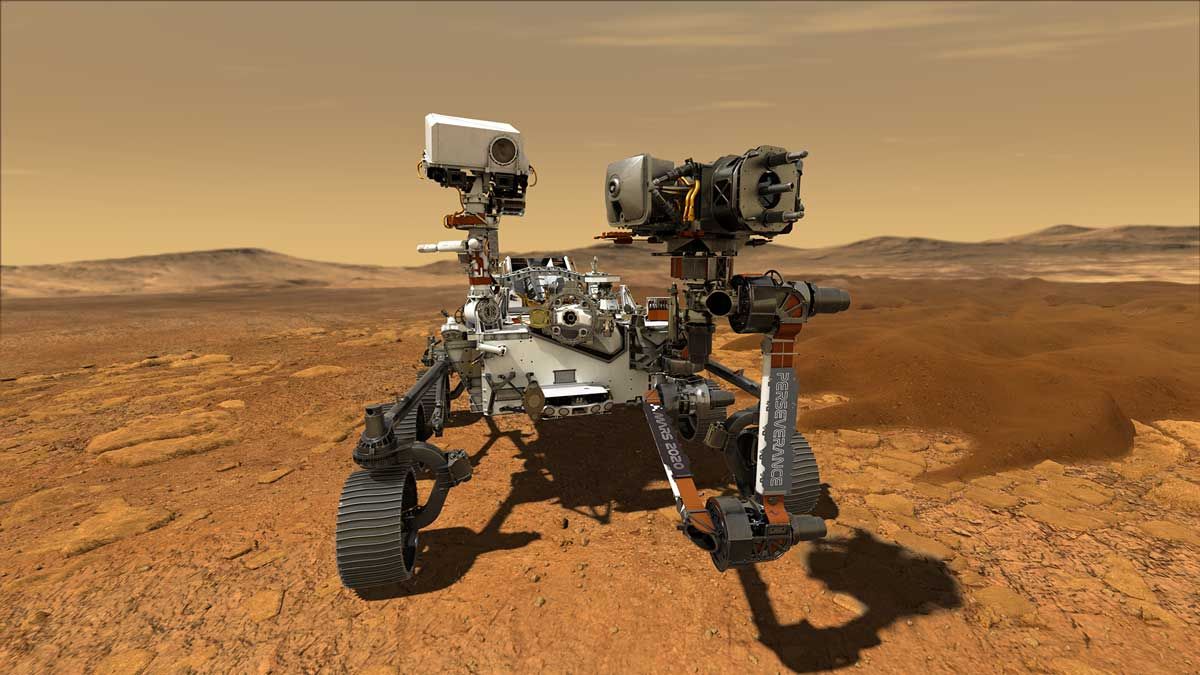Just before 4PM ET on February 18 (this Thursday), NASA's Perseverance rover will attempt to land on Mars. Like its predecessor Curiosity, which has been exploring Mars since 2012, Perseverance is a semi-autonomous mobile science platform the size of a small car. It's designed to spend years roving the red planet, looking for (among other things) any evidence of microbial life that may have thrived on Mars in the past.
This mission to Mars is arguably the most ambitious one ever launched, combining technically complex science objectives with borderline craziness that includes the launching of a small helicopter. Over the next two days, we'll be taking an in-depth look at both that helicopter and how Perseverance will be leveraging autonomy to explore farther and faster that ever before, but for now, we'll quickly go through all the basics about the Perseverance mission to bring you up to speed on everything that will happen later this week.
The Basics
Here's a quick overview video of the Perseverance mission from JPL.
How is Perseverance different from Curiosity?
While the overall design of both rovers is very similar, including the radioisotope thermoelectric generator as a butt-mounted power source, Perseverance builds on the experience that JPL has with Curiosity, resulting in a larger, more durable, and more capable robot.
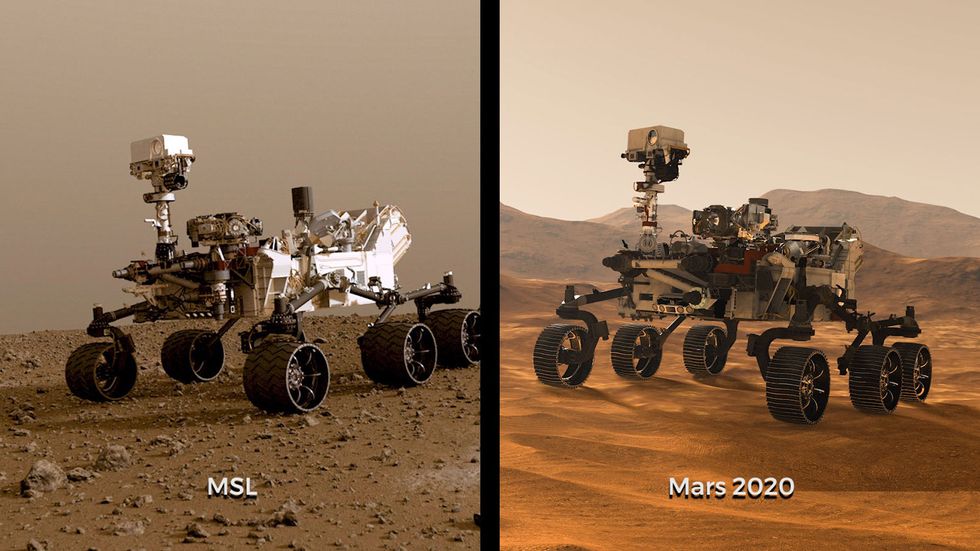
Perseverance is only a few centimeters larger than Curiosity, but is over 100kg heavier. Much of that extra chonk comes from a substantially heavier turret on the end of its robotic arm, which includes a coring drill. There are a bunch of other new science instruments as well, which we'll get to in just a minute. Perseverance also has five more cameras than Curiosity (for a total of 23), and while its primary imaging camera is still only 2 megapixels, Perseverance's version has a 28-100mm optical zoom. And for the first time, Perseverance will be taking along a couple of microphones so that we can hear what Mars sounds like.
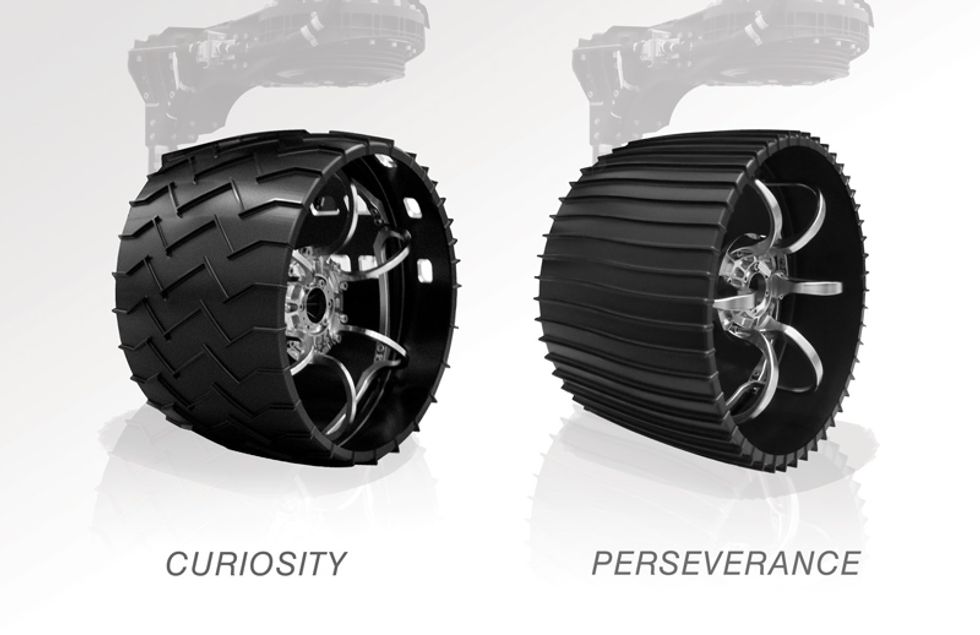
One of the problems that Curiosity has been having on Mars is wheel wear, and so Perseverance was designed with beefier wheels. Perseverance's aluminum wheels are 1mm thicker, with a tread pattern that's more resistant to wear caused by sharp rocks without sacrificing performance on sand. Gone, sadly, are the rectangular wheel cutouts that spell “JPL" in Morse code as Curiosity drives along.
Perhaps the most significant difference between the two rovers in software is that Perseverance is much more autonomous than Curiosity. It'll be able to plan its own driving paths, traveling farther every day. We'll be covering this in more detail in a separate post.
Curiosity, by the way, is still making her way up Mount Sharp, and clocked its 3,000th day on Mars last month with a total distance traveled of over 24km.
What science will Perseverance be doing?
Straight from NASA:
The rover's goal is to study the site in detail for its past conditions and seek the very signs of past life. Its mission is to identify and collect the most compelling rock core and soil samples, which a future mission could retrieve and bring back to Earth for more detailed study. Perseverance will also test technologies needed for the future human and robotic exploration of Mars.
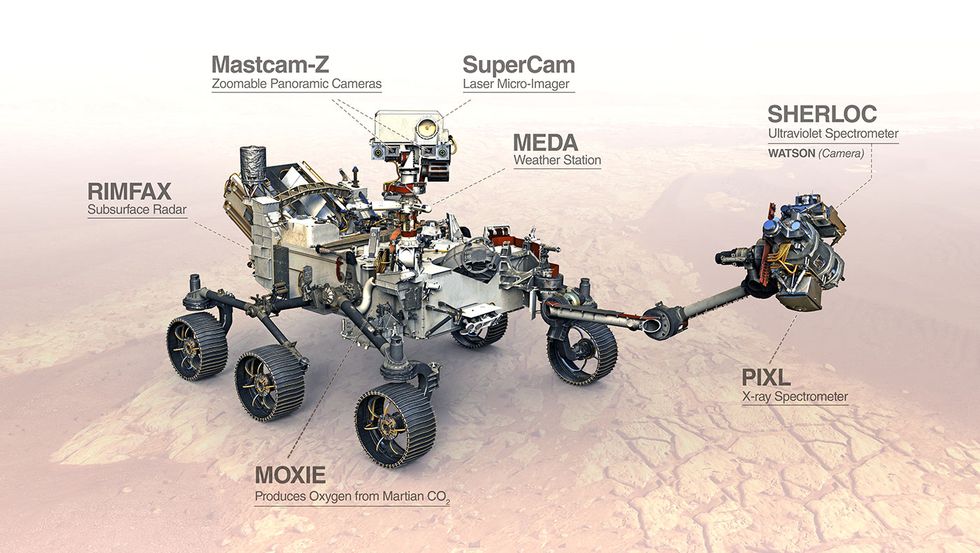
Perseverance is bringing seven science instruments to Mars, including:
- Mastcam-Z: Color cameras capable of panoramic and stereoscopic imagery. Most of the pretty pictures of the surface of Mars that we see will probably come from these cameras.
- SuperCam: A combination camera, rock-vaporizing laser, and spectrometer that can identify the composition of rocks and soils in areas that the rover's arm can't reach.
- SHERLOC: A close range microscopic camera and spectrometer that Perseverance can move within just a few centimeters of a rock for a detailed analysis, specifically designed to detect organic molecules. SHERLOC will also be observing bits of spacesuit material to see how well they handle the Martian atmosphere over time.
- PIXL: Another microscopic analysis tool which includes an X-ray fluorescence spectrometer to detect very small scale (like, grain of salt scale) changes in the composition and texture of rocks.
- RIMFAX: Ground-penetrating radar that can detect water or ice 10 meters beneath the surface underneath the rover.
- MEDA: A suite of sensors that measure temperature, pressure, humidity, wind speed and direction, and atmospheric dust characteristics.
- MOXIE: Moxie will try to convert Martian atmosphere (96% CO2) into useful oxygen with carbon monoxide as a byproduct via an electrolyzer heated to 800 degrees C, in a process that NASA says is a bit like a fuel cell running in reverse. Perseverance won't be using the oxygen, but if the technology proves itself humans may one day use it for breathable air and rocket fuel.
- Sample Caching System: A huge chunk of Perseverance is devoted to taking samples of the Martian surface, analyzing them, and storing them. These samples will be sealed up and left on the surface, with the idea that in a decade or so, another robot will come along, scoop them up, put them into a rocket, and fire them back to Earth. That last part hasn't really been figured out yet, but Perseverance will be taking the first step anyway.
And the last thing that Perseverance is carrying with it to Mars is an honest-to-goodness helicopter.
How does the Mars Helicopter work?
At some point after Perseverance has landed successfully, it'll make its way to a nice flat area and deploy the Mars Helicopter, named Ingenuity. The rover will then find a safe vantage point from which to watch as Ingenuity makes five flights over a period of 30 days. The helicopter won't be doing any science, since its primary objective is to prove that controlled autonomous flight is possible in the Martian atmosphere, but we should end up with some cool pictures.
We will also be describing Ingenuity more in detail in a future post.
Where on Mars is Perseverance landing?
The target is the bottom of Jezero crater, a 50km-diameter impact crater on the northwestern edge of a much larger impact basin called Isidis. In Slavic languages, “Jezero" means lake. Jezero was chosen because it looks (based on orbital imagery) like it was likely a huge lake in the ancient past, with rivers running into it and forming river deltas like we have here on Earth. Specifically, Perseverance is aiming to land close to the river delta in the image below:
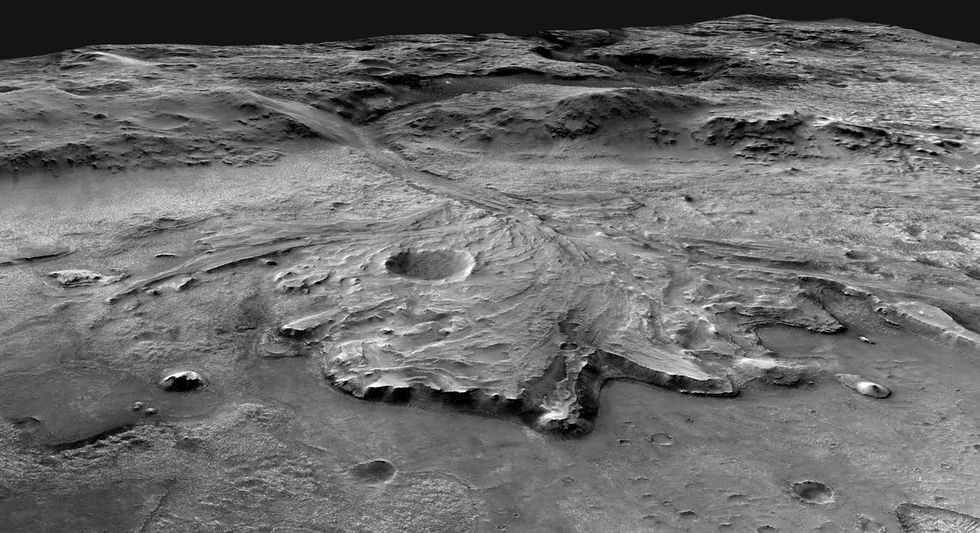
The idea is that if there was life on Mars at one point, ancient lake beds and river deltas are the best place to look.
How does the landing work?
It's very similar to the way Curiosity landed back in 2012, including a massive parachute followed by a powered descent, and a final touchdown using a Skycrane system. The biggest improvement to the landing strategy is that for the first time, the powered descent stage will use visual localization to actively navigate to an ideal landing spot, hopefully bringing the rover closer to its target in a safe way. Here's how everything is supposed to go:
How can I watch?
The official NASA live stream starts at 2:15pm ET on Thursday February 18.
What will actually happen on Thursday?
Most of the time, nothing will be happening, and we won't be able to see any part of the landing happen in real time due to the time delay between Earth and Mars. All that we can do is follow along with mission control at JPL as they receive a series of signals from Perseverance that (hopefully) confirm the successful execution of each phase of the landing. It'll be stressful and (again, hopefully) exhilarating, but again, by the time a signal arrives at Earth, whatever it's communicating will already have happened.
JPL knows exactly what signals they should be receiving and when, so the most likely indication of something going wrong is just the lack of a signal when one is expected. This negative information won't communicate much, and there are all kinds of non-catastrophic reasons why a signal may get missed. It could take minutes, hours, or days to determine what went wrong if there's an anomaly.
If everything goes well, confirmation will be the rover sending a series of signals that says it's successfully detached from the Skycrane and is stable and alive on the ground, at which point JPL mission control will go bananas (and so will we!). It may take some time (minutes to hours) for Perseverance to send back its first pictures from the surface, since the rover relies on communicating with other spacecraft in orbit to talk to Earth. And those pictures may not be all that great, since they'll likely be taken with the rover's hazard avoidance cameras that could have clear plastic protective covers still attached to them. Those glorious high resolution pictures of Mars that we've been enjoying from Curiosity will involve the rover unfolding its camera mast, and will take a bit longer to arrive.
Once Perseverance is safe on Mars, the team at JPL won't be in any immediate rush to start driving it around. If you're watching the livestream, you can feel good hanging around for the first picture or two from the surface, but after that, things will likely slow way, way down.
After the landing, what's the best way to follow along with the Perseverance Mission?
We'll be following the Perseverance mission as closely as we can, and we're looking forward to talking with JPL engineers to learn even more about rover autonomy and helicopter operations. For day to day updates, Perseverance herself is on Twitter, and the official NASA website is here.
Evan Ackerman is a senior editor at IEEE Spectrum. Since 2007, he has written over 6,000 articles on robotics and technology. He has a degree in Martian geology and is excellent at playing bagpipes.
